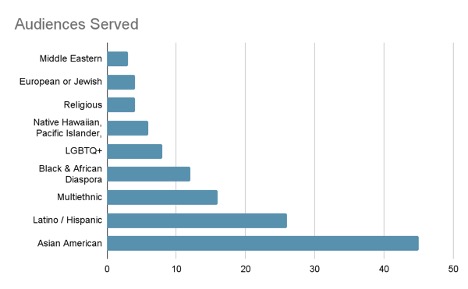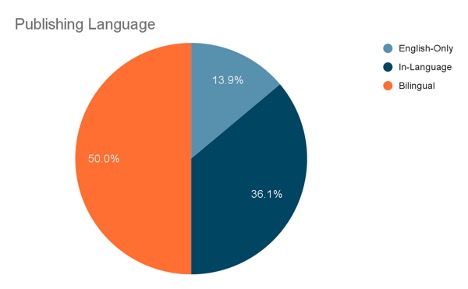An average of 2.5 newspapers closed per week in 2023 across the United States. The continued hemorrhaging of news providers, in an already fragmented media landscape, has fueled speculation that local journalism is on its death bed.
But a survey of some 100 ethnic media leaders in California – the epicenter of ethnic media in the country – paints a different picture.
Over half of the 72 survey respondents say they are holding steady, with 8% describing their operations as robust. Another 38% acknowledge they are vulnerable, though only 3% fear their future is at risk.
How to explain the enduring power of a sector rarely included in reports about the disappearance of local journalism, let alone in discussions among media reformers about how to rescue the field?
First and foremost, ethnic news outlets reach their audiences in ways that no others can.
Over 85% surveyed are either in-language or bilingual, giving them a near monopoly over the news and information they provide for Limited English Proficiency communities. Of the 13.9% that are in English only, these, too, serve very specific audiences with which they are culturally identified.
Ethnic media also have deep roots in their communities: 47% say they have been in business for 10 to 30 years, with 17% operating over 40 years. In an industry struggling to stabilize revenue in a competitive, ever-changing digital world, new ethnic media outlets continue to emerge: 7% of our respondents founded their outlets within the last five years.
These media are clear-eyed about what their communities need. Respondents to our survey were nearly unanimous in stating that their primary mission is to be advocates — to amplify the voices and concerns of their communities, which are too often neglected or misrepresented by general market media.
Although the mainstream may dismiss these outlets as preoccupied with news about their home countries, 85% say that local news is the most important coverage they provide, followed by community advocacy like civil rights and immigration, and “news you can use” like public safety and health care access.
Asked to rank their top news beats, a majority put immigration and the economy at the top, with health and race relations. Culture, arts and entertainment ranked alongside education as the next-highest, followed by politics and crime. Environment, science, sports and foreign affairs were ranked the lowest.
The rankings reflect the limitations of outlets operating with often miniscule budgets. Forty four percent of respondents reported revenue between $100,000-$500,000 per year, with one quarter operating with budgets under $100,000. Fewer than 7% gross over $1 million.
This leaves two-thirds of outlets with fewer than five full-time staff including editorial, business and admin; only 8 have over 20. One- and two-person newsrooms are stretched thin and limited to covering daily news beats they know, rather than specialized subjects on which they have little experience.
But these are mission-driven media whose aspirations and successes often exceed their resources.
Some 90% describe their business structure as being “independent”; 10% are subsidiaries of a larger organization. Close to 65% are for-profit, with 16% identified as nonprofit and 17% as sole proprietors. One quarter identified their own free labor as a key to their outlet’s sustainability.
Securing new revenue streams is by far the biggest priority for all respondents; 74% cite it as their biggest challenge.
This means increasing commercial advertising, which 50% credit as their primary revenue source, followed by grants and fellowships for 32%, public awareness ads for 17% and public notices for 12%.
Membership dues, subscriptions and donations are a negligible portion of revenue for the media surveyed.
To achieve new revenue streams, these media prioritize expanding digital capacity, followed by improving reporting capacity, growing audience engagement and — last but not least — applying for grants.
Among the top editorial challenges cited by 45% of the respondents was balancing the content needs of younger and older generations in their audience, followed by combatting dis- and misinformation.
Engagement, for the media surveyed, goes beyond measurable clicks and likes. Over half noted attendance at community events as a key metric for measuring reach and impact of their media outlet.
If there’s a single takeaway that emerges, it is that ethnic media pride themselves on their enduring commitment to their audiences and being masters of their own destiny.
Appendix: Survey Demographics
72 media leaders responded to our survey, sent to 100 media in California in December 2024 and January 2025.






